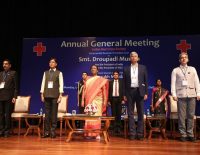Vaccinated before getting COVID infection are at lower risk of post-discharge mortality: ICMR

As per a study conducted by the apex health research body Indian Council of Medical Research, a one-year follow-up of COVID-19 patients discharged from hospitals found that participants who received at least one dose of anti-Covid vaccination before contracting the coronavirus infection had a lower risk of post-discharge mortality.
Of the 14,419 participants who were followed up at least once between four weeks and one-year post-discharge, 942 (6.5 per cent) had died and the remaining (93.5 per cent) were reported alive at any contact during one year of follow-up. They were from 31 hospitals across the country.
“Participants who had received at least one dose of the anti-SARS-CoV-2 vaccine before their COVID-19 infection had a lower risk of post-discharge mortality,” the study said.
The study “Determinants of post-discharge mortality among hospitalised COVID-19 patients: Nested matched case-control analyses from the National Clinical Registry for COVID-19” has been published in the Indian Journal of Medical Research (IJMR). It was conducted by the National Clinical Registry for COVID-19 study team. The team conducted nested matched case-control analyses to evaluate the factors related to one-year post-discharge mortality.
Vaccination prior to the COVID-19 infection (at least a single dose) provided 60 per cent protection against post-discharge mortality. People older than 40 years, men with co-morbidities and those who had moderate to severe COVID-19 to begin with had a higher chance of all-cause mortality within one of discharge from hospital.
ICMR has been maintaining the National Clinical Registry for COVID-19 at 31 centres across the country, where all hospitalised COVID-19 patients were periodically contacted by telephone till one year after discharge. Data collected till February 2023 were included in this analysis.








Comments